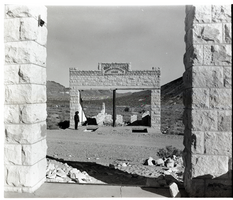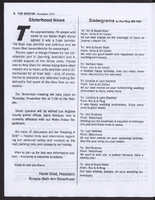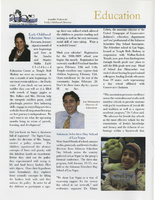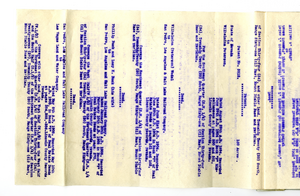Search the Special Collections and Archives Portal
Search Results

Meeting minutes for Consolidated Student Senate, University of Nevada, Las Vegas, April 03, 1979
Date
Archival Collection
Description
Text

Film transparency of the ruins of the H. D. and L. D. Porter Brothers Store, Rhyolite, Nevada, November 25, 1948
Date
Archival Collection
Description
Image

Letter from C. A. Earle Rinker to his sisters, undated (ca. 1907)
Date
Archival Collection
Description
Text
Molasky, Irwin
Irwin Molasky (1927-2020) is a Las Vegas, Nevada real estate developer and chairman of the Molasky Group of Companies. He was involved in many major Las Vegas development projects including Paradise Palms, Sunrise Hospital, Nathan Adelson Hospice, the University of Nevada, Las Vegas (UNLV), the Boulevard Mall, Bank of America Plaza, Regency Towers, and Park Towers.
Person
"Ralston Report" interview with Steve and Elaine Wynn: video
Date
Archival Collection
Description
Moving Image
Paul E. Meacham Faculty Papers
Identifier
Abstract
The Paul E. Meacham Faculty Papers (approximately 1977-1998) are comprised of articles and reports relating to the development of community colleges as well as organization and administration in higher education throughout the United States. The collection also includes course readers for EDA 731 Organization and Administration in Higher Education taught at the University of Nevada, Las Vegas.
Archival Collection




